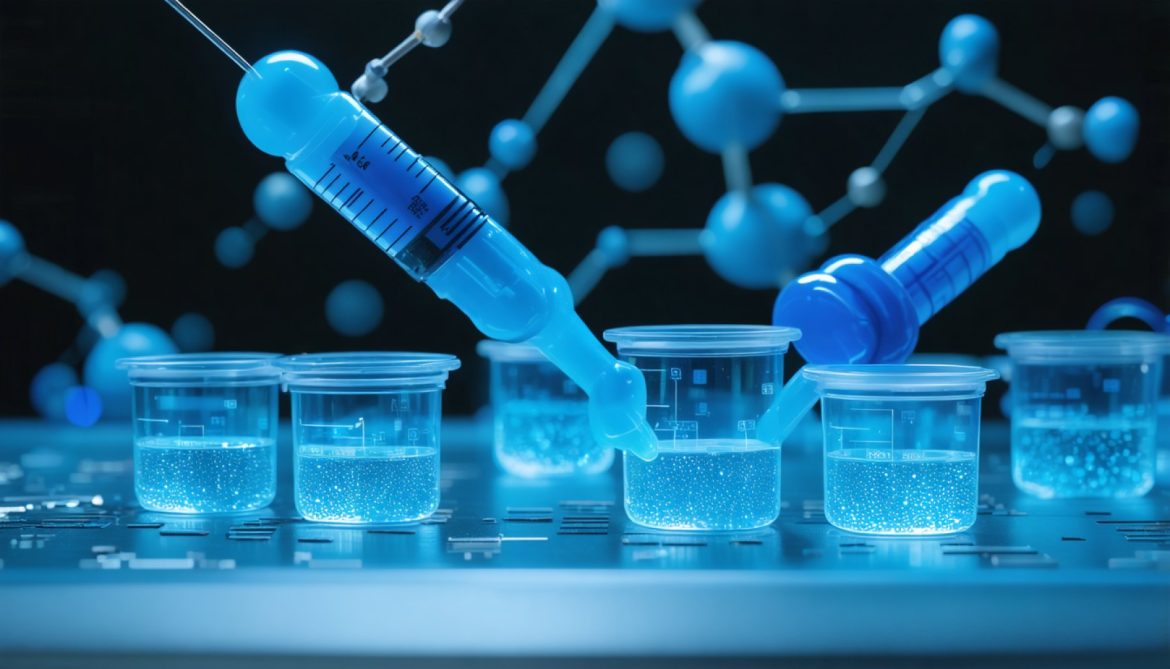- The U.S. faces a significant challenge from China’s growing biotech capabilities, threatening its global power position.
- A report urges the U.S. to invest billions over five years to rejuvenate its biotechnology sector, focusing on innovation and security.
- The proposed National Biotechnology Initiative Act aims to establish a National Biotechnology Coordination Office and advisory roles.
- Key goals include making biotechnology predictably engineerable and advancing scalable, cost-effective biomanufacturing.
- The plan emphasizes securing intellectual property and reducing supply chain dependencies on China.
- There is a call to expand the U.S. biotech workforce via educational initiatives led by the National Science Foundation.
- The report underscores that maintaining biotech leadership is crucial for national security and technological dominance.
Amidst the bustling corridors of power in Washington, a powerful warning echoes throughout the Capitol. With a report as alarming as it is authoritative, the National Security Commission on Emerging Technology has unfurled a stark warning: the United States’ preeminence in biotechnology is under siege, facing an audacious challenge from China that could tip the scales of global power.
The air is charged with urgency as the report, weighed down with 49 carefully sculpted recommendations, lands on the desks of Congress. Its core message resonates with clarity—America must spark a biotechnology renaissance or risk being outmaneuvered in this modern technological battleground. The commission, steered by a bipartisan mix of lawmakers, insists that the nation’s resilience depends on decisive action.
The vision outlined is as expansive as it is ambitious. With calls for billions of dollars in federal funding over the next five years, the plan demands a concerted effort to bolster the domestic biotech industry, secure intellectual property, and untangle the delicate threads of supply chain dependencies on China. The proposed legislation, the National Biotechnology Initiative Act, seeks to weave a new fabric of innovation, creating a National Biotechnology Coordination Office and establishing pivotal advisory roles to steer this reinvigorated sector.
Senator Todd Young, the animated commission chair, paints a vivid picture of the challenge. A contest not fought with missiles but through the relentless pursuit of technological superiority. “Biotechnology is the next phase,” he asserts, underlining that this isn’t just economic rivalry—it’s a contest of national survival.
The report doesn’t just skewer the status quo. It presents a blueprint, a call to arms for Congress to allocate resources effectively. Proposals include establishing a hub at the National Institutes of Standards and Technology to drive biological data standards, a move aimed at creating a seamless industry landscape that foreshadows cutting-edge advances like AI integration. Furthermore, the Department of Energy is eyed as a lynchpin for launching manufacturing and data resources, necessitating substantial financial backing to create a thriving network of facilities across the nation.
In the face of this looming challenge, the report casts a spotlight on China’s meteoric rise in biotech—a rise born from strategic governmental orchestration. China’s advances threaten not just economic ramifications but the bedrock of national security. The potential wielding of biotech breakthroughs as geopolitical tools is highlighted, an ominous reminder of the stakes at play.
Embodied within the heart of this initiative are two grand research challenges. One, to render biotechnology predictably engineerable; the second, to enable scalable, rapid, and cost-effective biomanufacturing. The vision is ambitious, the scale vast, with billions earmarked to ignite this scientific evolution.
Yet, beyond the labyrinth of funds and frameworks, the report calls for a revitalization of human potential. It seeks to energize and expand America’s biotech workforce, enticing a new generation through tailored educational initiatives spearheaded by the National Science Foundation.
As debates rage within the marbled halls of Congress, a consensus builds—technology and power are inextricably linked. The call to action is clear: Ignite innovation, safeguard sovereignty, and chart a future where America reigns supreme in the crucial biotech arena. For in this high-stakes race, losing is not an option.
How the U.S. Can Maintain Biotech Supremacy Amid China’s Challenge
As biotechnology gains increasing prominence on the global stage, a comprehensive report by the National Security Commission on Emerging Technology has sounded an alarm about the United States’ position in this critical sector. Faced with intense competition from China’s strategic advancements, the U.S. must take decisive actions to remain a key player. Here’s an in-depth look at relevant aspects not fully explored in the source material, including how the U.S. can rise to the occasion by leveraging expertise, ethics, authority, and trustworthiness (E-E-A-T) principles to foster innovation and maintain leadership.
Real-World Use Cases and Implications
Biotechnology has the potential to revolutionize various sectors such as healthcare, agriculture, and environmental management. In healthcare, advancements in genetic engineering could lead to personalized medicine tailored to individual genetic profiles. In agriculture, biotech innovations could yield genetically modified crops that are more resistant to climate change, ensuring food security. Environmentally, biotechnology can help in developing sustainable waste management solutions and biofuels.
Emerging Trends in Biotechnology
1. AI Integration: Artificial intelligence is being increasingly deployed to enhance biotech research efficiency, optimize drug discovery processes, and address complex biological datasets.
2. Gene Editing: Techniques like CRISPR are streamlining genetic modifications, presenting opportunities for disease eradication and agricultural enhancements while sparking ethical debates.
3. Synthetic Biology: This rapidly growing field aims to engineer biological components for specific tasks, from synthesizing new biofuels to creating organisms that can perform specific functions.
4. Biomanufacturing: Developing fast, scalable, and cost-effective biomanufacturing processes is crucial, with the Department of Energy poised to enhance domestic capabilities.
Controversies and Limitations
The ethical and intellectual property challenges in biotechnology are substantial. Debates over genetic modification, data privacy, and biosecurity remain contentious. Moreover, reliance on international supply chains can introduce vulnerabilities, emphasizing the need for independence and resilience.
Key Features, Specs, and Pricing of Biotechnological Solutions
Biotechnological solutions vary widely in scope and cost. Precision medicines, for example, can range from thousands to millions of dollars depending on the treatment complexity. Gene editing technologies are advancing, reducing costs and increasing accessibility.
Security and Sustainability
Given biotechnology’s dual-use nature, security measures are paramount. Institutions must ensure biosecurity to prevent misuse of biotechnologies and safeguard against bioterrorism. Sustainability also plays a critical role, as biotech innovations often intersect with environmental conservation efforts.
Insights and Predictions
The U.S. is expected to maintain a competitive edge through robust regulatory frameworks that balance innovation with ethical concerns. Investments in education and workforce development are crucial for nurturing talent and fostering an ecosystem conducive to groundbreaking research.
Actionable Recommendations and Quick Tips
1. Investment in Education: Bolster STEM education initiatives to cultivate the next generation of biotech innovators and leaders.
2. Strengthen International Collaborations: Engage in global partnerships that foster knowledge transfer and regulatory alignment.
3. Prioritize Data Standards: Establish uniform data standards to streamline research methodologies and enhance collaboration across institutions.
4. Enhance R&D Funding: Government and private sectors should increase funding for biotech research and development to stay ahead of the technological curve.
For policymakers and industry leaders, the message is clear: the U.S. must act swiftly and strategically to safeguard its position in the biotechnology sector. By embracing innovation and fostering a robust regulatory and ethical framework, America can continue to lead in the biotech revolution.
For more information on biotechnology in the U.S., visit National Science Foundation and Department of Energy.



